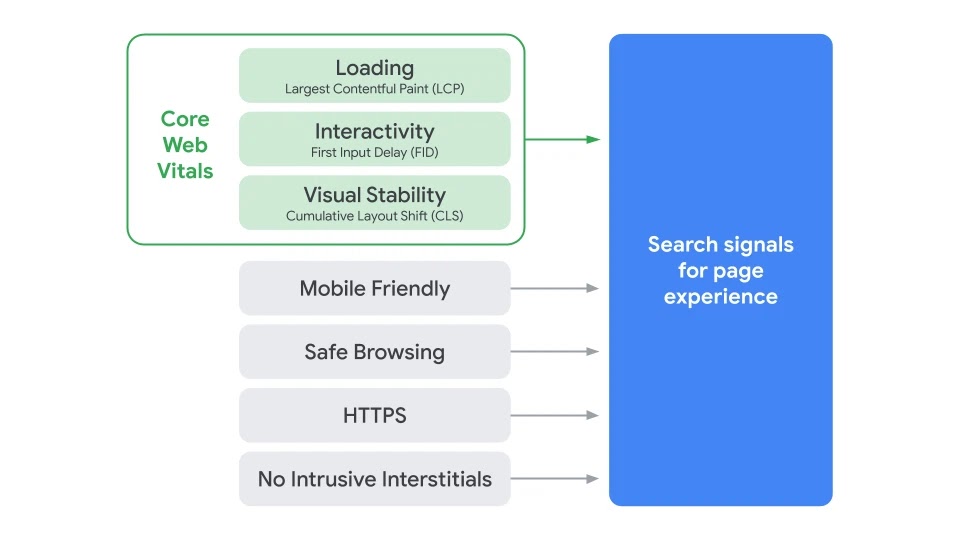Search engine optimization could change in 2021. Google’s Page Experience algorithm update is set to launch in August this year. This update in Google’s algorithm is considered to be the biggest shift in how Google ranks websites since the Mobilegeddon of 2015. While Mobilegeddon was about Google significantly prioritizing mobile-friendly websites in search results, the upcoming update will focus on ‘Page Experience.’
Core Web Vitals
At the heart of the Page Experience update is a set of metrics that helps Google and the website developers quantify the webpage experience – Core Web Vitals. Google recommends that every site owner/developer measure their pages’ Core Web Vitals, broadly classified into three aspects – loading, interactivity, and visual stability.
Largest Contentful Paint (LCP)
This element measures loading performance and how fast the key visual elements of your pages become available for the user after clicking through. The largest visual elements can be images, videos or block-level texts. The ideal range for LCP is less than 2.5s.
First Input Delay (FID)
Similar to LCP, FID measures how long it takes for your page to become interactive, so users can click and search. The ideal range for FID is less than 100ms.
Cumulative Layout Shift (CLS)
This element measures visual stability, and signifies the degree of page layout shifts during page load. Google rates this metric on a score of 0 to 1, and recommends a CLS of 0.1 as ideal.

Google strives to deliver the most relevant and quality search results to its users. Google’s algorithm and the search signals that it employs to deliver those results have evolved significantly over the years. The focus has increasingly been on rewarding websites with a great experience. In the build-up to the upcoming algorithm update, we have seen developments on mobile-friendliness, safe browsing, and intrusive interstitials guidelines. All of these along with the health of the Core Web Vitals of your webpages will count toward the overall Page Experience on your website.
How to prepare for Google’s Page Experience Update?
To enable adoption prior to the update rollout in May 2021, Google has introduced Core Web Vitals in a variety of their tools – Page Speed Insights and Chrome User Experience Report API. Late last year, Google integrated these metrics in a Google Search Console report that provides an overview of the issues impacting your webpages. These measures could really help website developers and owners identify opportunities to improve their site’s page experience.
A few things that should be an absolute priority –
Optimize to make your website mobile-friendly
The number of Google searches happening on mobiles has been increasing steadily since the invention of smartphones. According to various estimates, up to 70% of all searches on Google happen on mobile devices. Since 2015, Google has preferred to display mobile-friendly websites in the search results over those that are not. So, it makes a lot of sense to focus on your website’s mobile-friendliness.
Improve page speeds
This includes optimizing your images by adopting new-generation image formats, speeding up server response times, and faster loading of third-party scripts.
Focus on content
Content is still the king when it comes to ranking higher in Google. Your webpages should aim to provide the best possible answer to a searcher’s query. Avoid intrusive pop-ups and Call-To-Actions, especially full-screen ads that cover the main content.
All of the above, along with your willingness to test, optimize and test again, with the help of some of the tools linked above, will surely boost your website’s stature in Google’s eyes. Good luck!